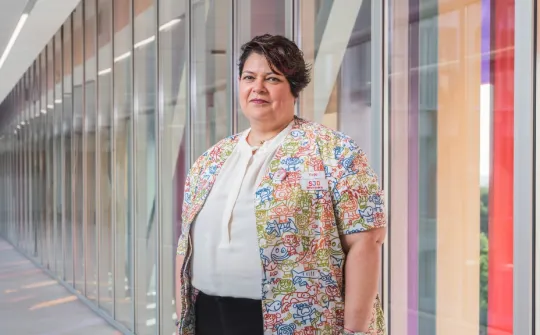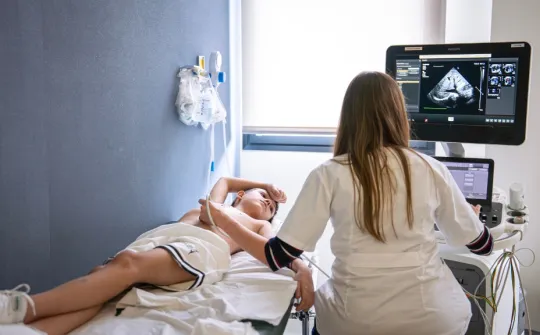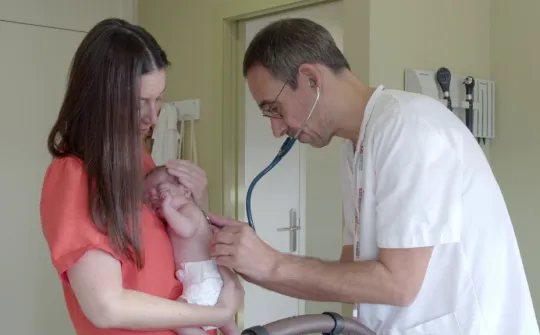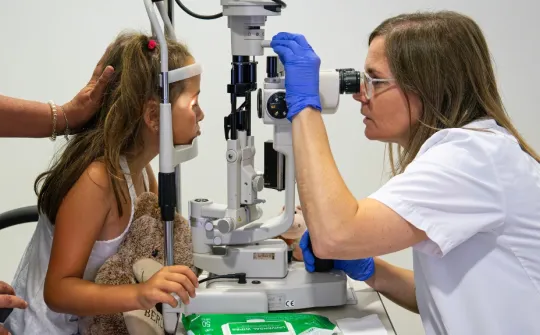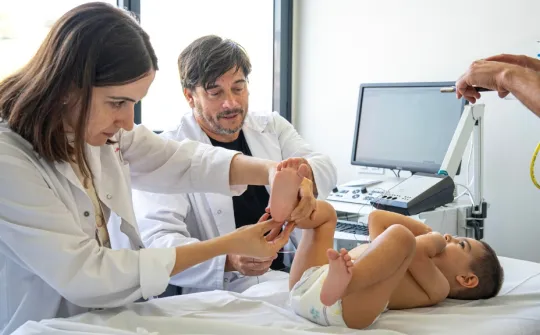
Progress in care provision has given rise to greater specialisation in venous access, which is why the SJD Barcelona Children's Hospital has recently implemented specialist vascular access teams to improve both precision and the patient experience.
Healthcare is moving forward in leaps and bounds, and as a result, new needs and challenges are appearing along the way with regard to improving patient safety and the quality of healthcare. One of the key aspects of patient care is venous access, which is crucial for administering medication and taking samples. However, for some patients, inserting a venous access point can be a difficult and painful task. It is here where specialisation and innovation play a decisive role.
‘In many pediatric healthcare facilities, venous access lines are inserted by nurses. For some complex patients, however, like chronic patients or those with exhausted vascular capital, a more specialised approach may be needed’, explains Sara Palou, Vascular Access Nurse at the SJD Barcelona Children's Hospital. In this context, the need for teams specialising in venepuncture arises.
As such, the SJD Barcelona Children's Hospital has recently implemented a team of nursing staff with specialist vascular access training to help safeguard vascular capital in venepuncture and venous catheter placement procedures. This nursing team has had specific training and uses techniques such as ultrasound guidance to ensure safe, precise access in patients with difficult venous access.
‘Not only does this approach improve the patient experience, reducing pain and complications associated with several puncture attempts, but it also optimises clinical results, ensuring correct, timely administration of treatments’, adds Sara Palou.
Improving both the safety and experience of the patient
Creating teams that specialise in venous access has not only revolutionised the way this procedure is approached in hospitals, but it has also had a significant impact on the safety of the patient and on their experience. It is because one of the most highlighted aspects of this approach is that treatment is personalised. ‘Every patient is unique, and the vascular access team makes sure to use the device best suited to each case, considering the duration and type of treatment, as well as the patient's characteristics’, comments Sara Palou.
‘Before, venous access was a painful and stressful procedure for many patients, especially those whose veins were hard to locate. However, introducing expert staff in venepuncture has made this experience much less traumatic’, she adds.
Veins are a valuable, limited resource, especially for patients with chronic illnesses or for pediatric patients, whose veins are subject to continuous stress due to long-term treatments. As such, it is fundamental to adopt practices that minimise vascular damage, and preserve the integrity of the patient's veins in the long term. This not only guarantees there will be veins accessible for future treatments, but also reduces the risk of complications associated with repeated insertion of venous access devices.
Another important aspect of specialist venepuncture is the focus on correct maintenance and removal of venous access devices. This helps to prevent long-term complications such as infection or thrombosis, and guarantees that the patient can continue to receive treatment in a safe and effective way.
Specialisation backed by data
‘Creating this specialist team has proven to be a significant step forward in clinical healthcare, setting a new standard of care in hospital. Continuing professional development, standardisation of protocols and the use of advanced technology are all key aspects of this initiative, which could act as a model for other hospitals hoping to improve their venous access procedures’, adds the specialist.
Moreover, this approach is backed by data. A study done at the SJD Barcelona Children's Hospital found that devices inserted by expert nursing staff resulted in 25% fewer insertion-related complications compared to devices inserted by general nursing staff with basic knowledge of ultrasound-guided venepuncture.
